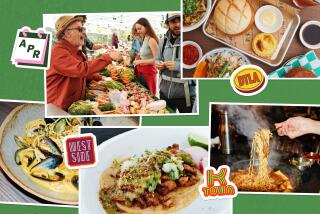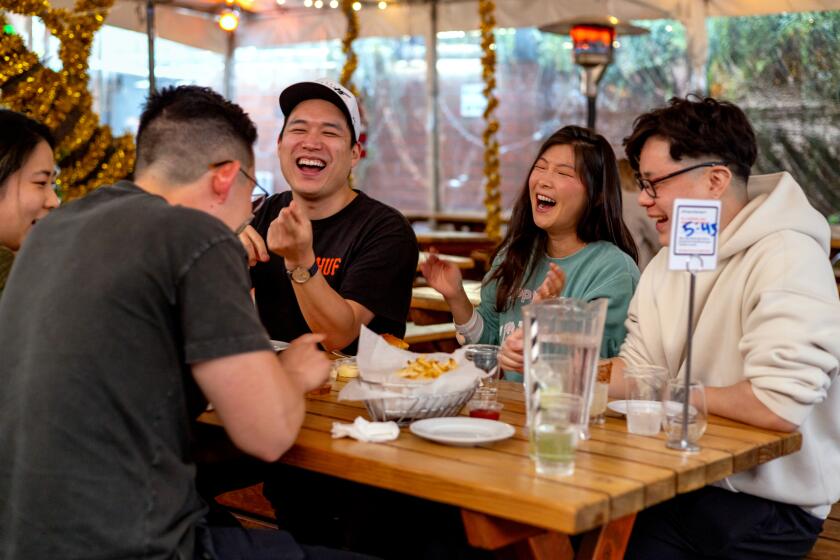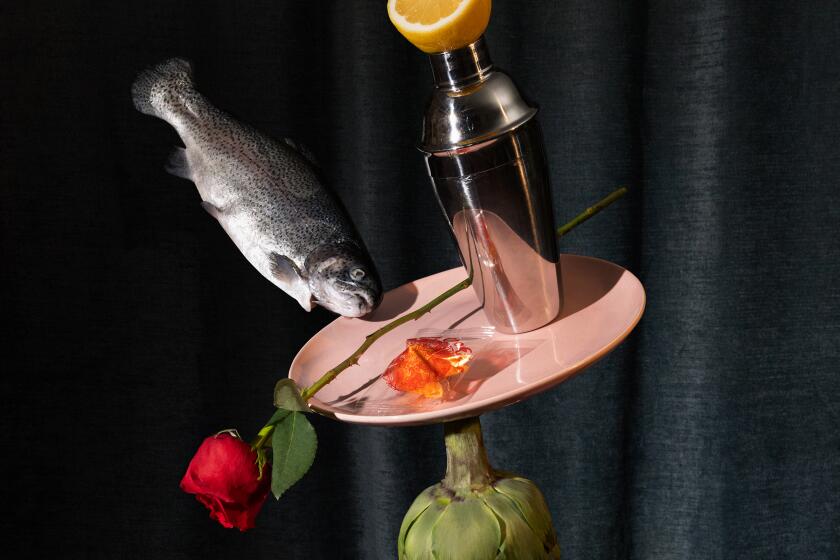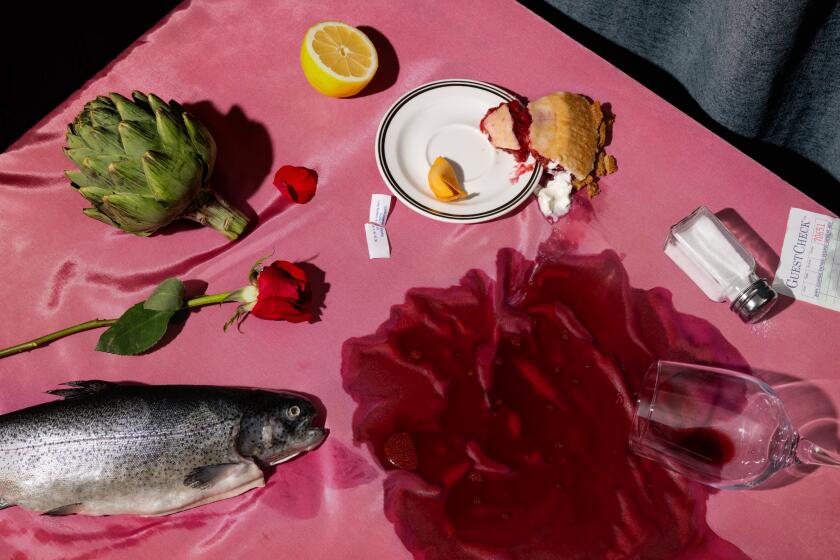What rings true and false for Los Angeles in Michelin’s new California guide
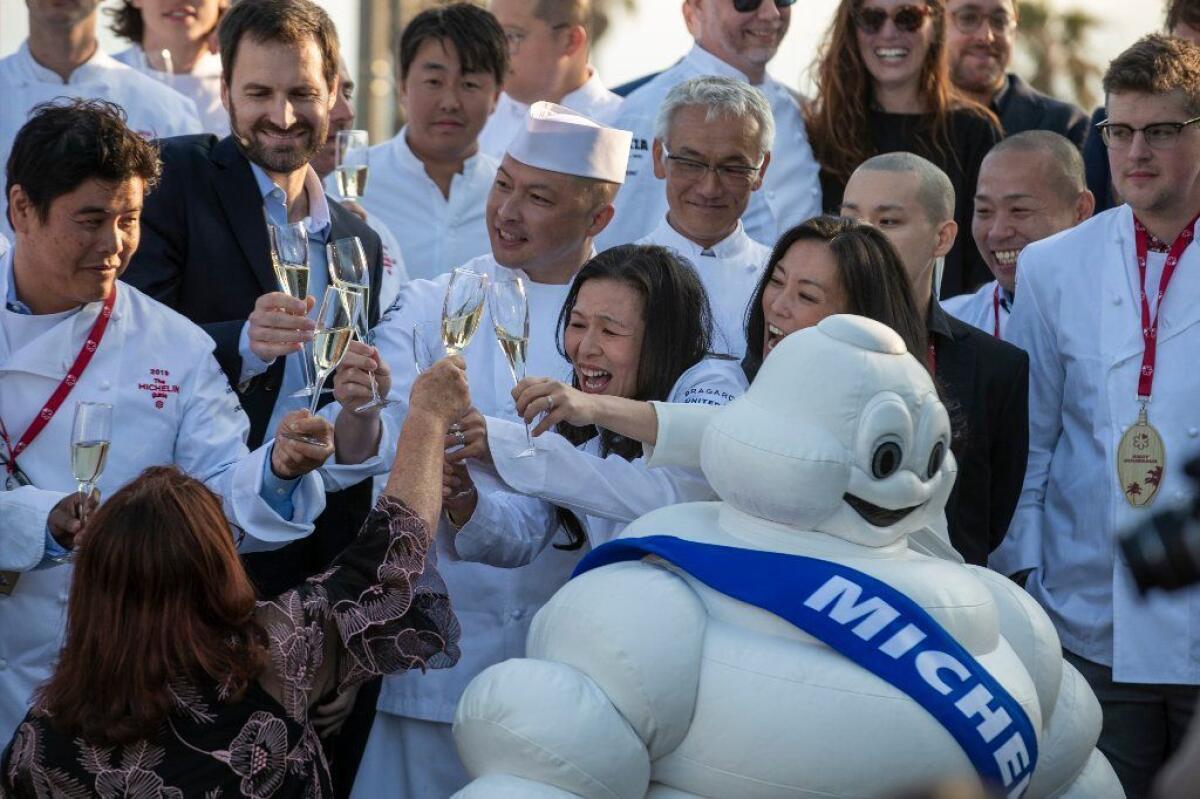
No three-star restaurant ratings outside the San Francisco Bay Area in the Michelin tire company’s debut guide to the entire state of California? No surprise, really. I think it will be years — if ever — before the guide’s parachuting mystery inspectors truly grasp what makes Los Angeles the most uniquely dynamic food city in America.
For now, the return of Michelin covering the Los Angeles dining landscape (after two feeble, narrow attempts at stand-alone guides of the city in 2008 and 2009) is mostly useful for any added attention it brings to the city and the briefly diverting debates it will spark. Six L.A. restaurants earned two stars: n/naka, Providence, Somni, Sushi Ginza Onodera, Urasawa and Vespertine. I’d align with half of those (the first three listed).
Among the 18 local places that garnered one star, I’m baffled by why Dave Beran’s modernist Dialogue didn’t rate higher: Maybe someone found the 18-seat setting in a Santa Monica mall claustrophobic (I don’t), even when the scoring is supposedly all about the food? And I’m perplexed that Bistro Na’s, among so many more compelling options in the wonder that is the San Gabriel Valley, managed its single star. This outlet of a Beijing-based restaurant group is the opposite of Dialogue: a far grander setting, a lot of mediocre cooking.
So … fun to carp and quip over, right? I don’t disparage the value Michelin might bring. If the guide introduces more diners to deserving, exemplary Southern California chefs — n/naka’s Niki Nakayama, Hayato’s Brandon Hayato Go, Kato’s Jon Yao, Shibumi’s David Schlosser and Carlos Salgado of Taco María in Costa Mesa (to name a handful of my own favorites) — then its existence can serve a worthwhile purpose. It gives the chefs for whom Michelin stars matter something to strive for.
As a portrait of how Michelin really views culinary Los Angeles, it isn’t the star assessments that I find most illuminating. It’s the other two rating designations the guide uses. “Bib Gourmand” — with an icon of “Bibendum,” a.k.a. the Michelin Man, licking his chops — was first introduced in 1955 as a marker for a recommendable, affordable meal. Last year, worldwide, the guide incorporated another, lesser symbol: L’Assiette Michelin, or the Michelin Plate. Its press materials note that the plate indicates “restaurants where the inspectors have discovered quality food.”
Jessica Koslow’s Sqirl, a restaurant that redefined breakfast food in America, gets a Bib Gourmand icon. So do Sara Kramer and Sarah Hymanson’s sneaky-brilliant Kismet, David Chang’s magnum opus Majordomo and Thai Town’s defining Jitlada. The list of Los Angeles-area Bib Gourmands is five-dozen strong. It points out Mariscos Jalisco for one of the best tacos in the universe. It covers San Gabriel notables (Chengdu Taste, Sichuan Impression and Sea Harbour among them) and indies, such as Adana in Glendale (not, ahem, in Pasadena, Michelin editors) and Meals by Genet along Fairfax Avenue’s Little Ethiopia, that give our food its essential character. This assembly is a fine starting point for understanding what the city is about and how its residents eat.
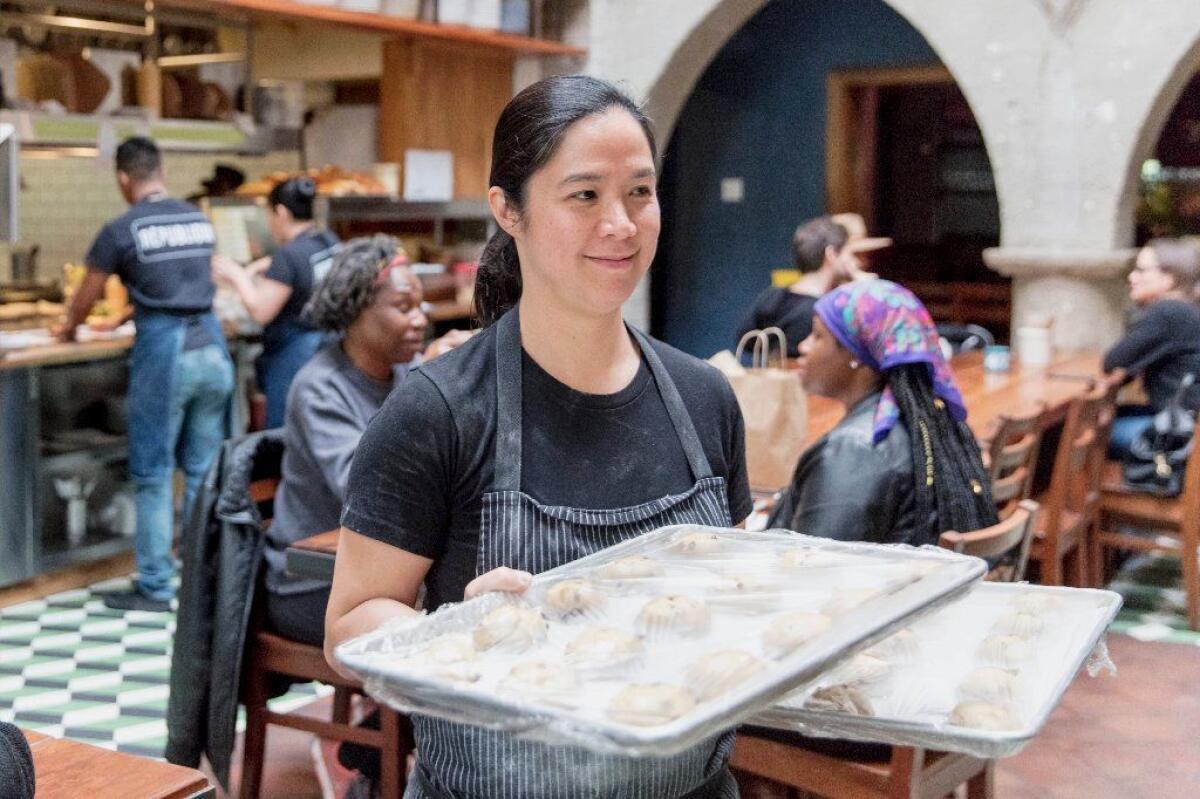
Republique, one of the great all-day restaurants in Los Angeles and the United States, merits nothing more than a Plate by Michelin’s grading standards, which is a joke. Same with Bavel, Ori Menashe and Genevieve Gergis’ Middle Eastern sensation downtown.
Plate designations fill out the guide, and they call attention to some places that rightly deserve recognition. But I get the feeling the guide is name-checking restaurants in Koreatown and the San Gabriel Valley to send a barely coded message: “See? Look at us performing our due diligence! We know how to cover Los Angeles.”
I’m fascinated by the Columbusing tone of discovery the company continually promotes, including these bons mots in the Bib Gourmand press release: “Michelin inspectors take great pride in finding hidden gems to complete the selection that are more widely accessible for diners, whatever their budget or craving.” The restaurants they highlight aren’t unknown secrets to food-loving Angelenos. They’re the life force of our communities.
In an era when public trust is fragile and maximum transparency is key, the Michelin process, particularly in a city as diverse as Los Angeles, smacks of carpetbagging. We’re told in promotional materials that their assessors know plenty about food and wine, and that’s it. I have no problem with striving for anonymity: As a critic, it’s hell to maintain, but it’s so much easier to evaluate a place when you don’t have to filter your experience through fawning service and rattled cooks. But we have no clue how much knowledge about cuisines these mystery figures possess, or the framework around which they build their critiques.
Perhaps I’m extra-sensitive to this: I was one of the carpetbaggers when I was Eater’s national critic. Like Michelin inspectors, I flew around the country for three weeks out of most months, eating and recording my experiences. My editors and I tortured ourselves over adding as much context as possible to these far-flung stories, whether it was about San Francisco’s reign as a fine-dining capital or how Vietnam’s culinary culture has indelibly enriched New Orleans. Readers, rightly, hold reviewers accountable for understanding the environments and cultural perspectives they’re casting judgments over.
I just can’t much trust the tastes of nameless auditors with cryptic rating systems. I certainly improved at my job as a national critic when I visited the same cities over and over, year after year. Maybe these parachuters will, too. Since I don’t assign stars in my own reviews, I’ll assess the Los Angeles portion of Michelin’s California guide with four words instead: well-intentioned but condescending.
Instagram: @bill_addison
Twitter: @billaddison
More to Read
Eat your way across L.A.
Get our weekly Tasting Notes newsletter for reviews, news and more.
You may occasionally receive promotional content from the Los Angeles Times.

